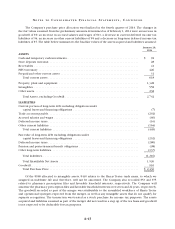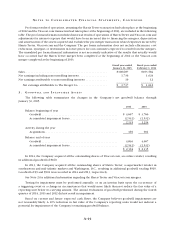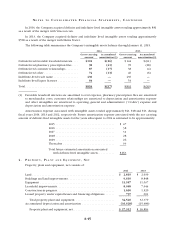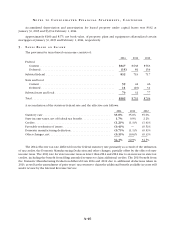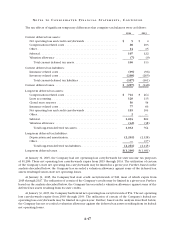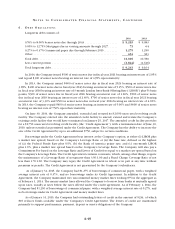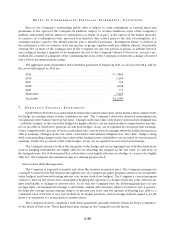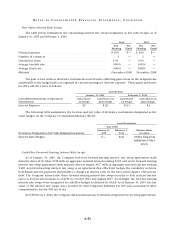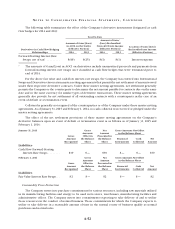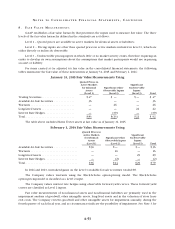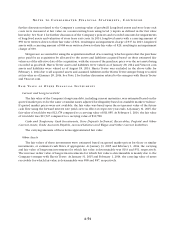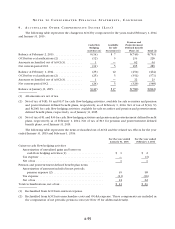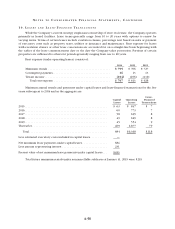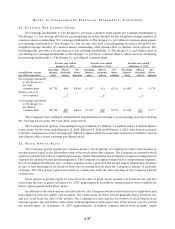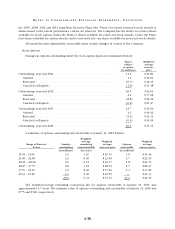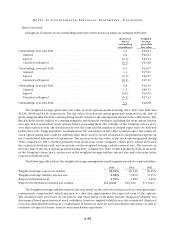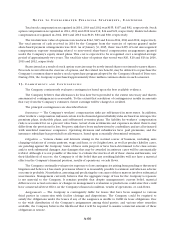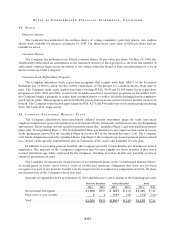Kroger 2014 Annual Report Download - page 118
Download and view the complete annual report
Please find page 118 of the 2014 Kroger annual report below. You can navigate through the pages in the report by either clicking on the pages listed below, or by using the keyword search tool below to find specific information within the annual report.
A-53
NO T E S T O C O N S O L I D A T E D F I N A N C I A L S T A T E M E N T S , CO N T I N U E D
8 . F A I R VA L U E M E A S U R E M E N T S
GAAP establishes a fair value hierarchy that prioritizes the inputs used to measure fair value. The three
levels of the fair value hierarchy defined in the standards are as follows:
Level 1 – Quoted prices are available in active markets for identical assets or liabilities;
Level 2 – Pricing inputs are other than quoted prices in active markets included in Level 1, which are
either directly or indirectly observable;
Level 3 – Unobservable pricing inputs in which little or no market activity exists, therefore requiring an
entity to develop its own assumptions about the assumptions that market participants would use in pricing
an asset or liability.
For items carried at (or adjusted to) fair value in the consolidated financial statements, the following
tables summarize the fair value of these instruments at January 31, 2015 and February 1, 2014:
January 31, 2015 Fair Value Measurements Using
Quoted Prices in
Active Markets
for Identical
Assets
(Level 1)
Significant Other
Observable Inputs
(Level 2)
Significant
Unobservable
Inputs
(Level 3) Total
Trading Securities . . . . . . . . . . . . . . . . . . . . . $47 $ — $ — $ 47
Available-for-Sale Securities . . . . . . . . . . . . . 36 — — 36
Warrants . . . . . . . . . . . . . . . . . . . . . . . . . . . . — 26 — 26
Long-Lived Assets . . . . . . . . . . . . . . . . . . . . . — — 22 22
Interest Rate Hedges . . . . . . . . . . . . . . . . . . . — (39) — (39)
Total. . . . . . . . . . . . . . . . . . . . . . . . . . . . . . . . $83 $(13) $22 $ 92
The table above includes Harris Teeter assets at fair value as of January 31, 2015.
February 1, 2014 Fair Value Measurements Using
Quoted Prices in
Active Markets
for Identical
Assets
(Level 1)
Significant Other
Observable Inputs
(Level 2)
Significant
Unobservable
Inputs
(Level 3) Total
Available-for-Sale Securities . . . . . . . . . . . . . . . $36 $— $— $36
Warrants . . . . . . . . . . . . . . . . . . . . . . . . . . . . . . — 16 — 16
Long-Lived Assets . . . . . . . . . . . . . . . . . . . . . . . — — 29 29
Interest Rate Hedges . . . . . . . . . . . . . . . . . . . . . — (2) — (2)
Total. . . . . . . . . . . . . . . . . . . . . . . . . . . . . . . . . . $36 $14 $29 $79
In 2014 and 2013, unrealized gains on the Level 1 available-for-sale securities totaled $8.
The Company values warrants using the Black-Scholes option-pricing model. The Black-Scholes
option-pricing model is classified as a Level 2 input.
The Company values interest rate hedges using observable forward yield curves. These forward yield
curves are classified as Level 2 inputs.
Fair value measurements of non-financial assets and non-financial liabilities are primarily used in the
impairment analysis of goodwill, other intangible assets, long-lived assets and in the valuation of store lease
exit costs. The Company reviews goodwill and other intangible assets for impairment annually, during the
fourth quarter of each fiscal year, and as circumstances indicate the possibility of impairment. See Note 3 for


